The last few articles that I have published have been aimed at attempting to correct many of the commonly held misconceptions regarding visual perception. I feel that it is important for the practicing observational realist to understand that there is a significant disparity between observable physical stimuli and their subjective correlates, or percepts. Biological visual systems cannot accurately measure the properties that define the physical world. Rather, a biological “image” is a reflexive response to stimuli generated from statistical information (accumulated experience, frequency of occurrence, etc.). However this does not mean that biological vision cannot produce a wealth of useful information for the observational painter or draftsperson. In fact, understanding how vision works can actually reveal how we may use its particular mechanisms to our advantage in an observational/representational visual art context.
Limiting our focus to value for this paper, let’s begin with a review of “value” in regards to objective representational art. A common definition for value is relative lightness or darkness. Within a representational visual art context, value is often used to represent some measure of light or luminance.
“Luminance is an objective measurement of the overall intensity of a stimulus expressed in candelas/m2 (photometers used for this purpose measure radiant energy with a filter that mimics the sensitivity of the average human observer, thus specifically measuring light). The resulting sensations are called lightness and brightness. Like all sensations, lightness and brightness are not subject to direct measurement and can only be evaluated by asking an observer to report the appearance of one stimulus relative to that of another.
…A common sense presumption is that an objective measure of light intensity (i.e., luminance) and the ensuing sensations of lightness or brightness should be directly proportional because increasing the luminance of a target stimulus increases the number of photons captured by photoreceptors and thus the output activity of the retina at any given level of background light (Sakmann & Creutzfeldt, 1969). A corollary is that two objects in a scene that return the same measured amount of light to the eye should appear equally light or bright. It has long been known, however, that perceptions of brightness or lightness often fail to meet these expectations.” — Perceiving the Intensity of Light -PURVES, WILLIAMS, NUNDY, AND LOTTO
“As early as the 19th century, studies have shown that perceptions of lightness/brightness do not scale linearly with luminance and vary when the same stimulus is presented on different backgrounds. …Experimental conditions which are comparable to past experiences with different source distributions elicit different reflexive responses, thus resulting in the variability of lightness/brightness scaling.
…The frequency of occurrence of luminant target-surround relationships indicate that the same luminant target will appear darker if it occurred less frequently in the perceiver’s past experience, providing an explanation of why equiluminant targets will look different in different contexts.” –PURVES
What the aspiring observational/representational artist can garner from these concepts regarding perceived value is that there may be a greater chance for the successful representation of light/luminance if one aims to replicate contextual value relationships rather than individual values.
So what are some ways we can do this?
One answer can be found within a three-layer process that I use when assessing a student’s observational replication effort. This method of analysis can be dubbed Scan, Stereo and Squint and here is how it works:
Scan. The first thing I do when I approach a work for examination is a first–impression scan. Without going into a long explanation regarding preattentive processing, useful fields of view or gestalt principles of organization, I will simply describe the step as alternating gazes between the work (painting or drawing) and the reference source from the same perspective as the artist. What I am looking for here are those incongruities that might ‘jump out’ from a general cyclic scan, in a sense, engaging or directing attention to a particular location for further inspection. This phase of analysis may be understood more simply as a “Can you spot the difference(s)?” exercise. One aspect of visual perception that may explain how an alternating gaze may give rise to disparites is visual persistence. Once thought to contribute to our perception of motion, visual persistence describes the manner in which static percepts persist for a short time in visual memory after a stimuli is no longer physically present, thus allowing for it to be somewhat integrated with a subsequent scene. As I shift my gaze back and forth, I am temporarily integrating one static scene with another in the hopes that incongruities may ‘pop out’.
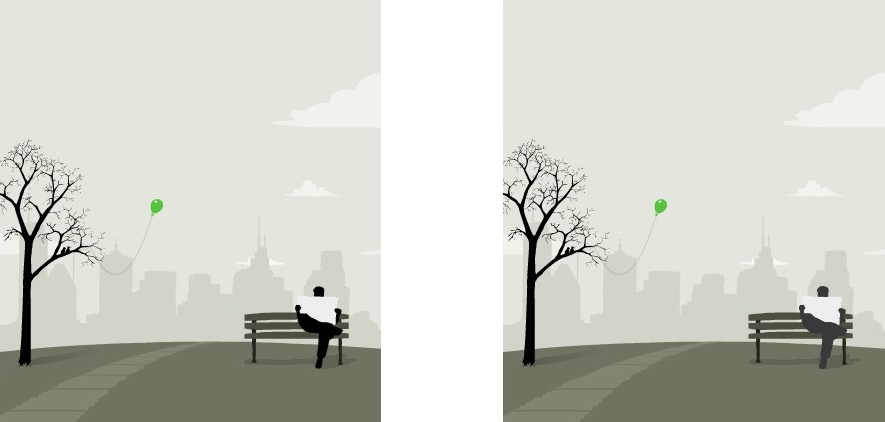
How many differences can you spot by shifting your gaze between the two images?
Stereo. Next, I set out to challenge or reinforce the information garnered from my initial scan with a stereoscopic analysis. To do this, I hold my fixation point between the targets to be compared (i.e. the reference source and the artist’s work). I situate myself at an ideal distance in which both visual targets can occupy my binocular visual field simultaneously (again, making sure to maintain the relatively same perspective held by the artist). It is here that additional disparities may also pop out. I should clarify that since I am experiencing both targets in more temporal regions of my binocular visual field, (the areas where rods far outweigh cones), color will be perceived as diminished. For this reason I would opt not to make significant color judgements with this mode of comparison.
Squint. Squinting, the third layer of this analysis, is one of the most useful tools for visual information gathering in an observational/representational art context. When we squint, we alter the shape of the eye’s lens and reduce the amount of light that can enter the eye. As such, our visual acuity is decreased proportionally to the severity of the squint. Lightness levels decrease as numerous value steps merge together into larger, fuzzy chunks of light and dark. This simplification allows for the artist to capture larger (macro) components that may not be as apparent amidst complexity, when visual acuity is high. (It is also worth noting that the perceived intensity of colors is diminished here with the decrease of incoming light.)
If I suspect that there may be an issue with micro-macro value pattern relationships, I will revisit the earlier mentioned scan phase but with a strong, fixed squint. If the overall patterns look reasonably accurate, I will proceed to specific value relationship comparison with a dynamic squint. The dynamic squint is a way of using the mechanics of our perception to analyze relative value relationships when quantitative measurements (like that of a light meter or spectrophotometer) are not available. Here is how it works:
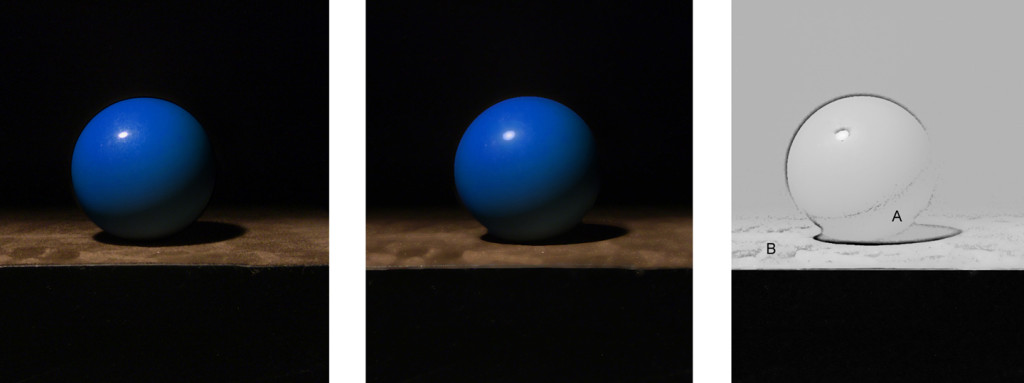
The blue sphere on the left represents the artist’s reference source while the central image represents the artist’s painting or drawing. The central illustration demonstrates a reflected light (A) that is recorded too light.
The image on the left represents the artist’s reference source while the image in the middle represents an artist’s drawing or painting effort. The far right image is a legend illustrating which areas we are discussing. Let’s assume that the basic anchor values were established aligning the darkest darks and lightest lights with the limitation of the available materials. Subsequent values were added by judging against these initial anchors in an effort to build corresponding value relationships–but now we need to check those judgements. This is where the dynamic squint comes in.
To make this example simple, let’s limit our focus to analyzing two target values with a dynamic squint: The reflected light on the sphere (A) and the overall value of the sphere’s resting surface (B).
I begin by targeting specific value relationships for analysis. Value relationships that I will choose to start with are those that have ‘popped out’ in the earlier scan and stereo phase. For now, let’s begin with the reflected light (A) on the sphere. I begin by fixing the target reference area/value in my gaze and slowly increase the severity of my squint until the values that represent the reflected light are “merged” into the surrounding analogous values. With my squint halted and maintained right at the specific severity level to achieve this merging, I turn my gaze to the corresponding area on the drawing. If the corresponding target value on the drawing or painting is still noticeable at the “squint severity” that caused the reference target area value to merge with analogous surrounds, then I know that the value relationship in that area is not representing the reference target relationships accurately. In this case it would mean that the reflected light is most likely too light in this context.
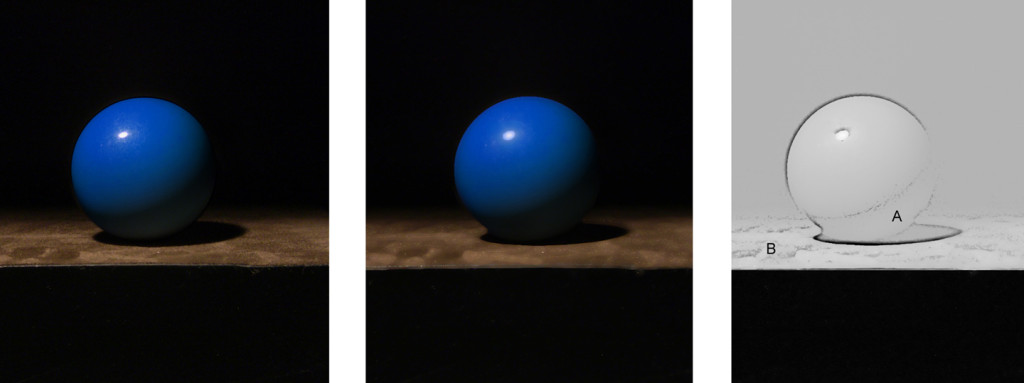
The blue sphere on the left represents the artist’s reference source while the central image represents the artist’s painting or drawing. The central illustration demonstrates a reflected light (A) that is recorded too dark.
To see if I may be too dark I will reverse the process and begin with a gaze at the drawing and squint until the target value merges with surrounding analogous values. When this happens, just like before, the squint is arrested and the gaze shifted to the reference target. If the corresponding target reference value is liberated from the surround then I know that my drawn or painted value is too dark.
With this comparison method in mind, try this one on your own:
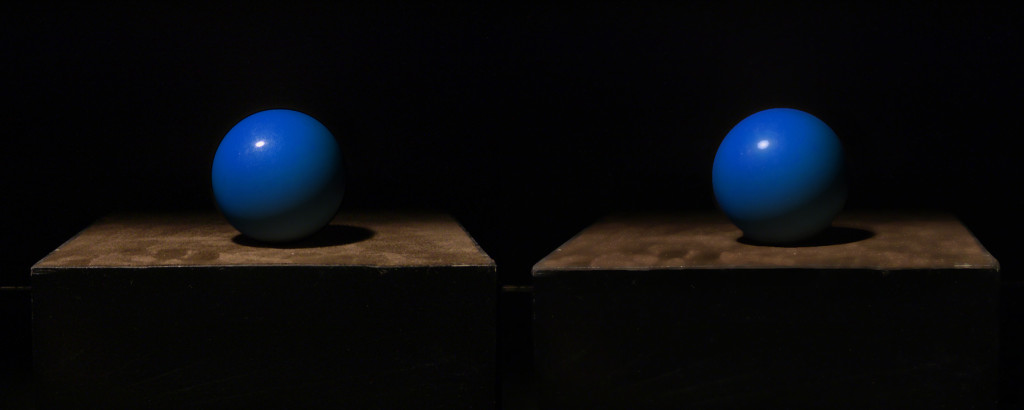
The blue sphere on the left represents the artist’s reference source while the right image represents the artist’s painting or drawing.
Is the illustrated tabletop (image on the left and region illustrated as area B on the above image legends) too light or too dark when compared to the reference source on the right?
Remember this Scan, Stereo and Squint analysis does NOT provide the objective physical measurement that can be garnered with certain tools, but it does allow for you to use your vision system to do one of the things that it does best—relative comparison.
I hope you find this helpful in your continuing creative efforts.
Happy Painting!

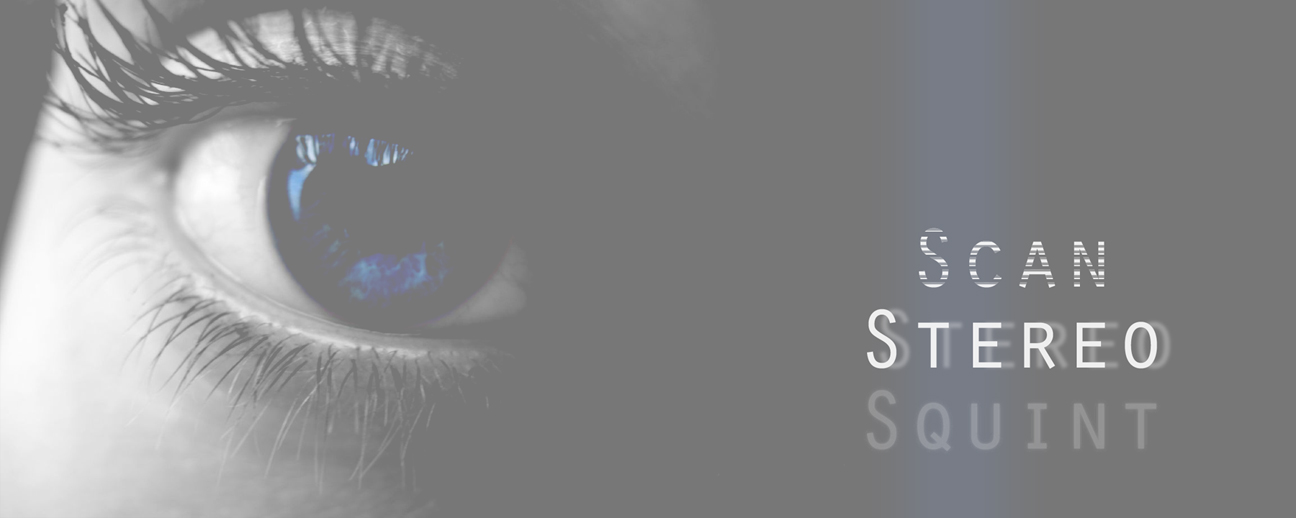

Light
Very helpful. First I’ve heard of the dynamic squint.